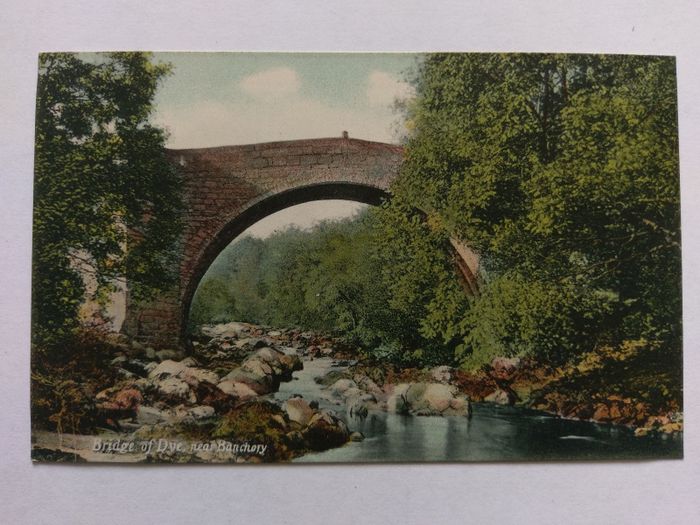Annotation:Bridge of Dye (The)
X:1 T:Bridge of Dye, The M:C L:1/16 Q:"Slowish" R:Strathspey B:Archibald Duff – Collection of Strathspey Reels &c. (1794, p. 18) Z:AK/Fiddler’s Companion K:D D6F2 A3AA2F2|BB3Bd3 GF3Fd3|D6 F2 AA3AF3|B3AB2d2 F6d2| D6F2 AA3AF3|BB3Bd3 A2F2F2d2|d3cTB3A TB3AF3A|TB3AB3d F4 F2f2|| a3ba3f g3fe3d|TB3AB2d2 A2F2 F2fg|a3ba3f g3fe3d|TB3ABd3 F6 fg| a3ba3f g3fe3d|B3AB3d AF3Fd3|D6F2 AA3AF3|TB3ABd3 F4F4||

Built in 1680 with a ribbed single arch thar harks back to late medieval times, this is one of the earliest bridges in the North-east. Its importance, and that of the north-south routeway on which it stands, are emphasized by an act of 1681 that permitted tolls to be levied for its upkeep. [1]
- ↑ Information from ‘Exploring Scotland’s Heritage: Aberdeen and North-East Scotland’, (1996)
